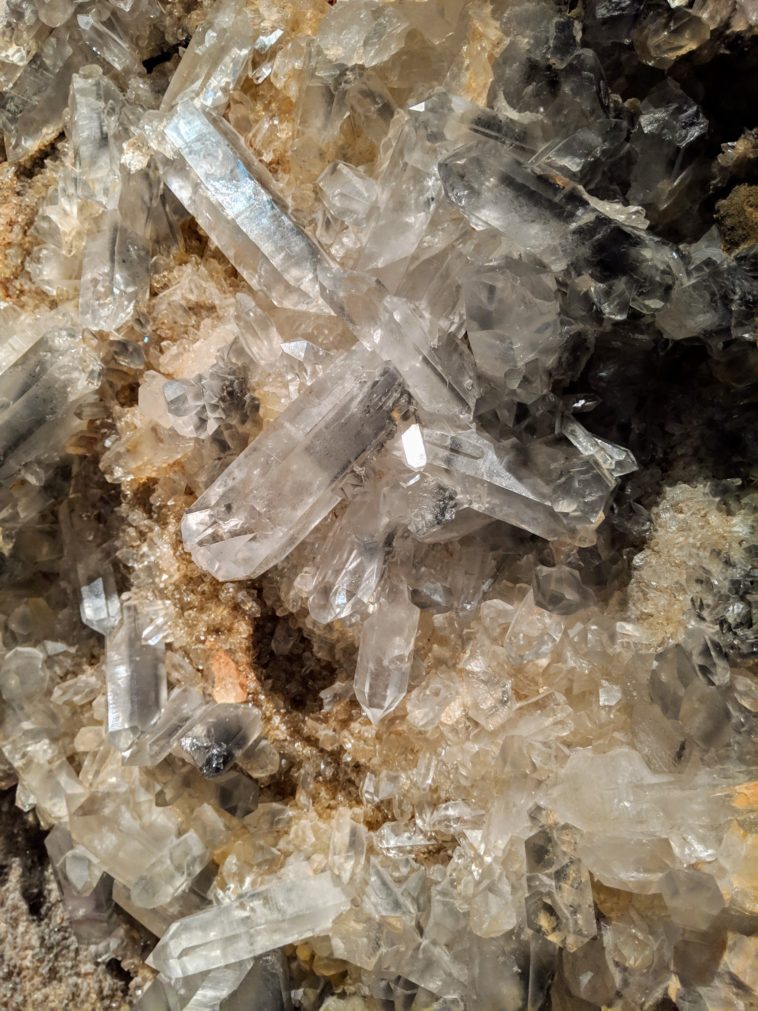Key Takeaways from the Fascinating World of Quartz
- Quartz is a hard, crystalline mineral primarily composed of silicon dioxide.
- The two main forms are α-quartz (stable at lower temperatures) and β-quartz (stable at higher temperatures).
- It’s characterized by its hardness (7 on the Mohs scale), various colors, and its hexagonal crystal system.
- Quartz is used extensively in jewelry, and its varieties are often classified as gemstones.
- It has significant historical importance, with ancient Greeks and Romans holding various beliefs about its properties.
- The mineral plays a crucial role in industries due to its piezoelectric properties.
Let me tell you, as someone who’s always been fascinated by the hidden wonders beneath the earth’s crust, diving into the world of quartz feels like unraveling a treasure map. It’s not just a stone; it’s a story etched in time, a symphony of nature’s artistry.
The Alluring Journey of Quartz: A Narrative Exploration
The Discovery: A Moment Etched in Time
I still remember the first time I held a quartz crystal. It was like holding a piece of history, millions of years old. Each facet told a story, a journey from the depths of the earth to the palm of my hand.
A Spectrum of Colors: Nature’s Palette
What’s truly mesmerizing about quartz is its range of colors. From the deep purples of amethyst to the sunny yellows of citrine and the delicate pinks of rose quartz, each variety whispers its own tale. It’s like a kaleidoscope of nature’s best work.
The Transformation: From α to β
The transformation of quartz from α-quartz to β-quartz is a marvel. At 573 °C, it changes its structure, like a dancer fluidly moving from one form to another. This isn’t just science; it’s poetry in motion.
A Jewel Through Ages: Quartz in Human History
Throughout history, quartz has been more than just a mineral. For the ancient Greeks, it was ‘krustallos,’ their word for ice. They believed it was water so deeply frozen it would never thaw. In the Middle Ages, people thought quartz crystals were fossilized ice. Imagine that!
The Piezoelectric Marvel: A Modern Twist
The modern chapter of quartz is as thrilling as its past. When pressure is applied to quartz, it generates an electric charge. This piezoelectric property makes it invaluable in electronics, from watches to smartphones. It’s like a secret power hidden in plain sight.
A Symphony of Science and Lore
Quartz is not just a mineral; it’s a symphony of science, history, and lore. It connects us to the earth, to our past, and to the endless possibilities of the future. Every time I look at a quartz crystal, I see a universe waiting to be explored.
The Healing Mythos: More than Just a Stone
The belief in quartz’s healing properties adds a mystical dimension to its scientific marvels. Though not scientifically proven, many cherish quartz for its supposed metaphysical abilities. It’s a stone that not only captivates the eyes but also enchants the soul.
The Eternal Quest: Humanity’s Fascination with Quartz
Our fascination with quartz is a testament to our eternal quest for beauty and understanding. It’s a journey that takes us deep into the heart of our planet and the mysteries of our universe. Quartz is not just a mineral; it’s a mirror reflecting our own quest for discovery.
Reflective Questions
- How does the transformation of quartz from α to β form mirror the constant evolution of our own lives?
- In what ways does our fascination with the beauty of quartz reflect our deeper connection with nature?
- Could the mythical healing properties of quartz teach us something about the power of belief and perception in our lives?
Frequently Asked Questions
- What is Quartz?
Quartz is a hard, crystalline mineral composed of silicon dioxide. It’s known for its durability and variety of forms and colors. - What are the Main Forms of Quartz?
The two main forms are α-quartz, which is stable at lower temperatures, and β-quartz, stable at higher temperatures. - Why is Quartz Used in Jewelry?
Its hardness, diverse colors, and crystal clarity make quartz a popular choice for jewelry and gemstones. - What are the Piezoelectric Properties of Quartz?
Quartz generates an electric charge under mechanical stress, making it valuable in electronic devices like watches and radios. - Does Quartz Have Healing Properties?
While many believe in quartz’s metaphysical and healing properties, these claims lack scientific evidence. However, the belief in its powers offers a glimpse into human fascination with the mystical aspects of nature.





